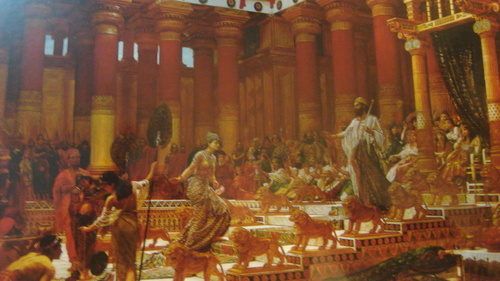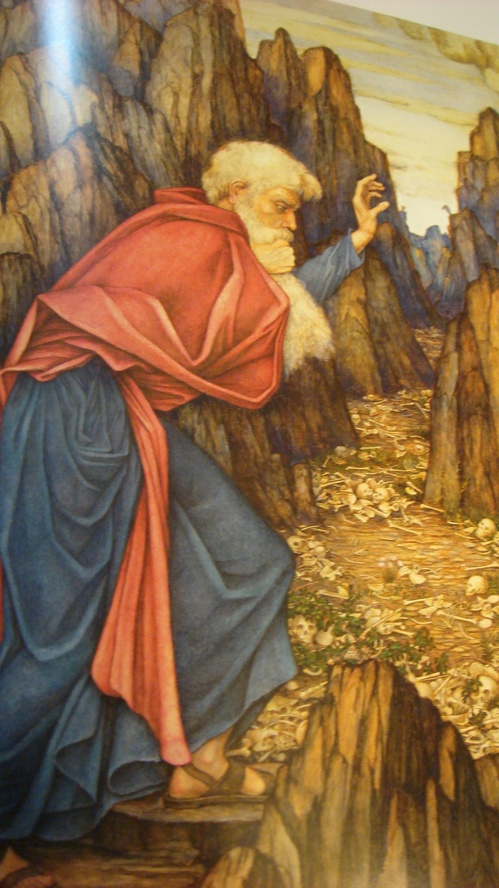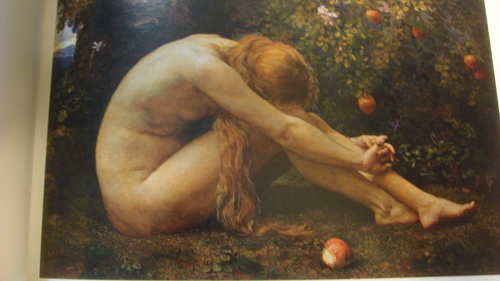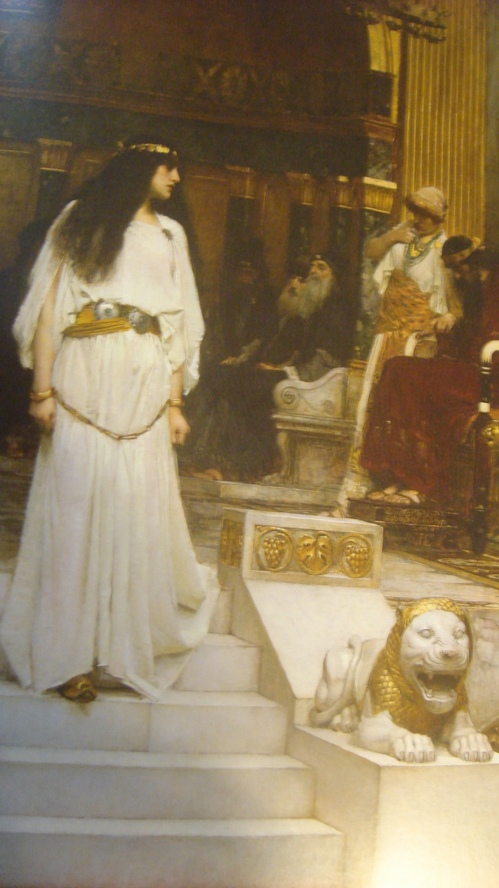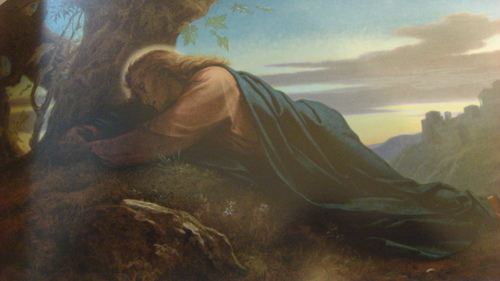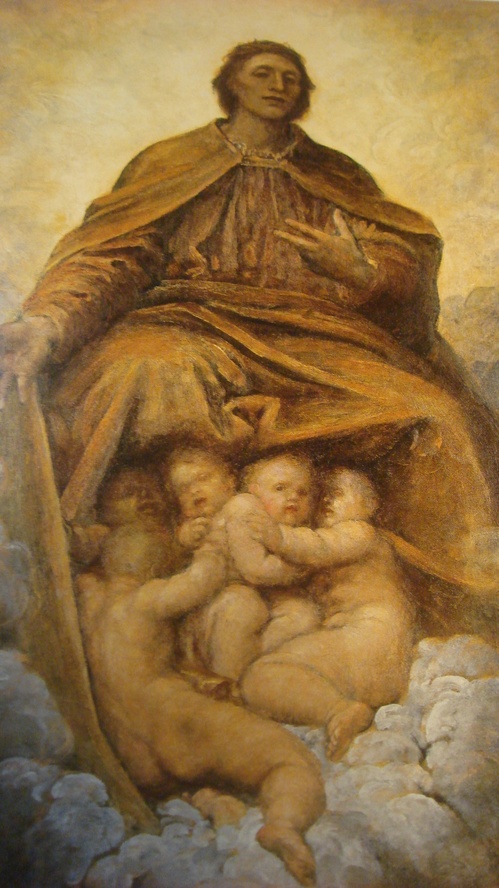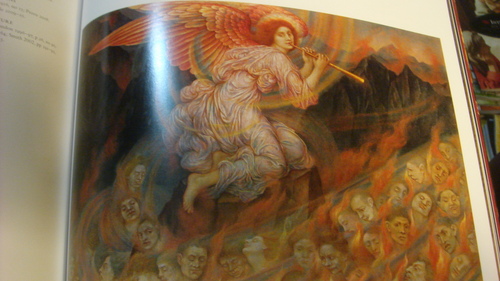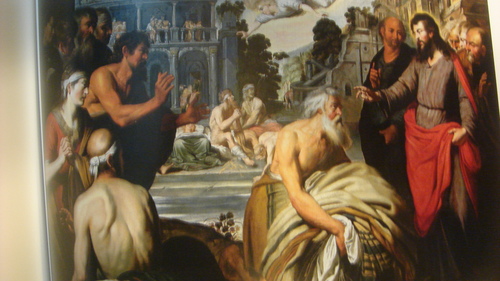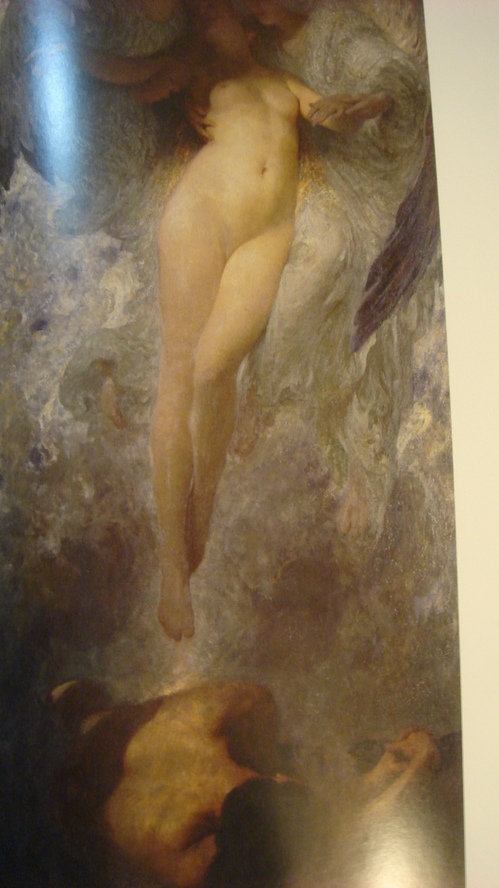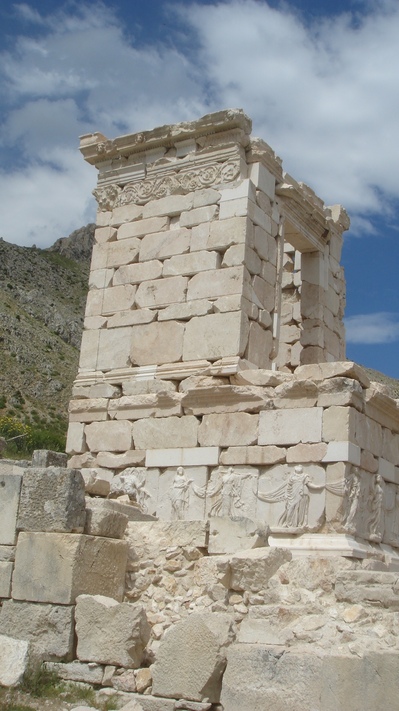I’ve just returned from a challenging three week lecture and preaching stint in Australia and near the end I was able to go see an art exhibition at the gallery in Sydney entitled Victorian Visions, thanks to friends Andrea and Dean Moore. Naturally I was most interested in the Biblical images in the gallery. Pictures were not allowed in the gallery itself so I bought the exhibition book and these pictures and descriptions are from it. Enjoy. BWIII
Here we have a magnificent very large painting of Solomon meeting The Queen of Sheba, who clearly forgot the Hebrew dress code, or had a wardrobe malfunction she was so glad to see Solomon. Edward Poynter, an English painter produced this huge tableau over a six year period.
This very fine painting of Ezekiel contemplating the valley of dry bones by John Rodham Spencer Stanhope (1880) reflects the mood of the Victorian era, and its continued devotion to painting Biblical scenes. Ezekiel seems to be about to gesture in the direction of the bones (perhaps to raise them?).
There were several fine pictures of Eve in the gallery, this being my favorite. It is an apt portrait of the moment of realization that she has just done something she ought not to have done that will change everything and haunt her for the rest of her existence. The painting is by Anna Lea Merritt (1885) and the artist confirmed that this is meant to convey Eve’s sorrow over what she has done.
This fine large painting is of Herod the Great and his wife Mariamne (he is on the right sitting on the throne) and also shows the Jewish scribes who accused and condemned her attempting to poison the king. She was in fact executed for the supposed crime, of which she was in all likelihood not guilty. Another woman in the court, Salome, had fomented this rumor Herod later, expressing some remorse, built a tower in Jerusalem and named it after her. This story comes from Josephus’ Antiquities. John William Waterhouse painted this in the latter part of the 19th century.
One of the most frequently painted scenes in the Victorian era was Christ’s agony in the Garden of Gethsemane, and this is a good example of how it was typically portrayed. This painting is by Joseph Noel Patton (1868) and what is most interesting to me is that it is very similar to the later painting of the same scene by the Russian artist Ge, including the image of dawning coming, and the portray of Christ as having rather reddish hair.
This very interesting allegorical painting is by George Fredric Watts painted in 1873-75 is intended to depict the spirit of Christianity, which at the time was being weakened by the divisions and disputes between various branches of Christianity. The title of the picture when made public was Dedicated to All Churches, showing in fact the author’s disgust with all the dissensions. But this was not made plain when it first came to the public’s eye. Some thought the figure above was Christ, with his children, but in fact the large figure is of the church and the squabbling, fighting infants below the denominations given birth by the church. Notice the use of the Jacob and Esau being born motif.
This very unusual painting shows an angel playing its trumpet, while the damned burn in Hell (perhaps she was playing ‘Hell’s Bells’?? :). Evelyn de Morgan is the artist who painted this striking scene, largely taken from Dante’s Inferno,. not from the Bible. The painting came to light in 1916 during WWI and aptly indicates how the artist was thinking when it came to the Hell of war and the people it sent into the underworld.
This painting follows the style of Vermeer (if you want to see an interesting movie about him see The Girl with the Pearl Earring with Colin Firth and Scarlet Johannson). The artist in this case is the Flemish artist Artus Wolffort (1581-1641) and is not from the Victorian era, but in fact his paintings only began to come to light then and afterwards. This is the scene from John 5 of the Pool of Bethesda.
This remarkable and huge painting is of the creation of Eve (seen above) out of the side of Adam. She is being gently lifted from Adam’s rib cage by angels. The artist is Solomon J. Solomon and this painting first came to light in the early 20th century.
The oddest painting of the lot is this peculiar rendering of Christ’s carrying the cross to Golgotha. with a demon hovering on the top of the cross. Jesus is portrayed as bleeding, and indeed as very effeminate in this painting by Gustav Adolphe Mossa (1883-1971) a French artist. Especially odd is the bottom of the picture which depicts his disciples accompanying him to Golgotha dressed as monks in hoods carrying candles. Though this painting was done at the end of the Impressionist period, the artist was clearly following his own muse, to say the least.
